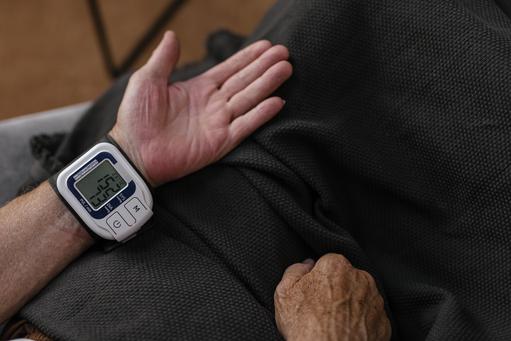|
The impact of a unifying narrative does not confine itself to an organisation's internal boundaries. It acts as a catalyst for collective action, motivating employees, and stakeholders alike toward shared objectives. This shared story becomes the driving force behind innovation, it bolsters problem-solving capabilities, and shapes the organisation into a responsive and adaptable entity. In a world where trust, differentiation, innovation, talent attraction, stakeholder engagement, and customer loyalty wield substantial influence, a captivating narrative emerges as a positive force for a diversified MedTech company. It adeptly communicates the company's mission, values, and impact, establishing trust, distinguishing the brand, fostering innovation, attracting top talent, engaging stakeholders, and cultivating customer loyalty. Ultimately, it solidifies a company's brand identity, nurtures relationships, and fuels long-term commercial success.
The potency of an inspiring company narrative lies in its ability to weave a common thread through the diverse interests of employees, creating unity and a shared company culture. A compelling story acts as a connective tissue, transcending departmental and hierarchical boundaries, resonating universally regardless of individual roles or backgrounds. Such narratives instill a collective sense of purpose and pride, fostering a shared identity embraced by every employee. When everyone is tethered to a common story, it encourages a cohesive culture where values and goals are not just communicated but lived and upheld by each member of the organisation. This shared narrative becomes a wellspring of motivation, aligning the workforce toward a singular vision and propelling the company forward as a unified and harmonious entity.
These claims may seem exaggerated when applied to a company narrative. However, to grasp the potential impact of storytelling, let us briefly examine the realms of religion, politics, finance, and the women’s movement. All these domains are predicated upon narratives that not only inspire and motivate diverse groups of individuals but also make them reshape their lives and dedicate their time and energy to the causes these narratives portray.
Religion
Religion plays an important part in the spiritual lives of billions of people around the world. Religious stories hold a significant influence over the beliefs and practices of faith communities, providing them with a sense of meaning and purpose. The potency of a narrative's impact is exemplified in the case of Jerusalem, a city that embodies the enduring power of stories.
For Jews, Jerusalem is a testament to the divine intervention of their narrative, where God commanded Abraham not to sacrifice his son Isaac. For Christians, Jerusalem holds multifaceted significance across various church factions, but it universally marks the hallowed ground where Jesus Christ delivered his teachings and shared the Last Supper with his disciples before his crucifixion. Similarly, for Muslims, Jerusalem bears importance as the place where the Prophet Mohammad started his mission and experienced a divine vision.
What is striking about these narratives is that they have endured through centuries, despite the absence of any scientific evidence, relying on the power of spiritual belief. This emphasises the influence of storytelling. People hold these stories dear to their hearts, embracing them with unwavering faith. Such narratives have the power to shape cultures, societies, and even geopolitical landscapes. The enduring power of religious narratives, like those surrounding Jerusalem, teaches us that stories are more than tales, but the scaffolding upon which belief systems are constructed, and they have the potential to move nations and shape destinies.
Politics
Consider politics. Political ideologies are founded upon stories that individuals hold so firmly that they are prepared to resolutely defend their convictions, even at the cost of armed conflict. These ideologies shape the governance, policies, and destinies of nations, and their power lies in the stories they tell.
Consider democracy, for instance. It is a powerful narrative that extols the virtues of power vested in the hands of the people or their elected representatives. Democracy's story emphasizes principles of equality, individual rights, and the regular exercise of those rights through elections. It speaks to the idea that citizens should actively participate in shaping their government and society through voting and civic engagement. This narrative has led people to fight for democratic values, even in the face of oppressive regimes, as they believe in the story of democracy's inherent worth.
Socialism is another political ideology grounded in a compelling narrative. It advocates for collective or state ownership and control of the means of production, distribution, and exchange. The story of socialism centres on reducing economic inequality and ensuring that resources and wealth are more equitably distributed among society's members. This narrative has inspired revolutions, social movements, and political changes across the world, as believers are motivated by the story of a fairer and more just society.
In contrast, authoritarian states are political systems characterised by centralised power and limited political freedoms. They too are predicated on stories. Such states often feature a single leader or a small group of individuals with substantial control over the government, little or no opposition, restricted civil liberties, and limited or no free elections. They prioritize order and control over individual rights and freedoms, often relying on censorship, propaganda, and coercion to maintain their authority. Despite its repressive nature, it has garnered fervent adherents who are willing to defend their vision of a disciplined and ordered society, sometimes at great human cost.
These political narratives are strong forces that shape the world we live in. They are stories that compel people to action, and at times, to support and engage in conflict. Understanding the power of these narratives is essential for comprehending the dynamics of political movements, governance, and global affairs. It emphasises that the stories we believe in are not just words; they are forces capable of reshaping societies and history itself.
Money
Money, in its essence, is a symbol devoid of inherent value. Take a $100 bill, for instance. It possesses no intrinsic worth; you cannot eat it, clothe yourself with it, or find shelter beneath its folds. In today's digital age, most monetary transactions occur virtually, further emphasizing that money is not a tangible commodity but a representation of value. What makes money intriguing is that its value is predicated upon a story, a narrative that commands the largest following worldwide, surpassing the collective adherents of all religions combined. Money, in essence, is a story with believers numbering billions.
This narrative begins with the idea that a particular piece of paper or digital entry holds value. It is a shared belief system, one upheld by individuals, corporations, and governments across the globe. This shared belief is what allows us to exchange money for goods, services, and even intangible assets like trust or promise. Consider the notion of a banknote. Its value exists because we believe in the authority and stability of the issuing government or institution. It is a mutual understanding that a piece of paper, despite its lack of intrinsic value, can be exchanged for something tangible or intangible in the real world.
This shared belief in money's value creates a complex web of economic interactions and relationships. It fuels trade, investment, and economic growth. It enables people to plan, save for retirement, and invest in education and healthcare. Money, as a story, is a unifying force in the modern world, transcending borders, cultures, and languages. Yet, like all narratives, money is not without its challenges and contradictions. Economic disparities, financial crises, and questions about the fairness of wealth distribution persist. But the fact remains that money, as a story, is a force of unparalleled influence, guiding the decisions and actions of individuals and nations alike. In a world where the value of money is woven into the fabric of society, it becomes clear that its true worth lies not in the physical notes or digital records but in the collective trust and beliefs that sustain this narrative. Money, in the end, is a story that shapes our lives, economies, and the world at large.
Women’s movement
The women's movement is a testament to the power and influence of a story about equality. Over decades, this movement has enhanced the status of women worldwide. What makes this narrative particularly interesting is that, unlike the stories underpinning religion, politics, and money, the pursuit of women's rights has largely been achieved through peaceful means, which is a testament to the millions of people around the world who embraced the story that activists told.
The narrative of the women's movement is simple: equality. It tells a story of a world where women and men stand on equal footings, where gender should not be a barrier to opportunities, rights, or dignity. This story resonated with countless individuals who recognized the inherent justice in this vision. The power of this story lies in its ability to inspire action. It mobilized women and men from all walks of life to come together and advocate for change. Grassroots activists, iconic leaders, and ordinary citizens joined forces, fuelled by the belief in the story's inherent truth. They organised rallies, signed petitions, and engaged in peaceful demonstrations, all with the goal of dismantling systemic inequalities and securing equal rights for women.
What sets the women's movement apart from many other stories that shape our world is its peaceful nature. While religious, political, and economic narratives have often been associated with conflict and violence, the women's movement has predominantly relied on peaceful activism and advocacy. This nonviolent approach has garnered widespread support and sympathy from people of diverse backgrounds, fostering a sense of unity and shared purpose.
The influence of this narrative has been significant. It has led to legal and societal changes, from suffrage and reproductive rights to workplace equality and gender representation in leadership roles. Women's rights have advanced on a global scale, improving the lives of millions. The women's movement is a powerful example of how a story can shape the world when embraced by a collective of individuals who believe in its message. It demonstrates that narratives grounded in principles of justice and equality can bring about transformative change, even without resorting to violence. The women's movement serves as a reminder that stories have the power to move societies and bend the arc of history toward progress and justice.
Takeaways
The MedTech industry's journey through decades of M&A activity has been a transformative one, marked by the pursuit of economies of scale, technological access, and regulatory mastery. The resulting financial and organisational benefits, however, have inadvertently overlooked a critical aspect: organisational culture. The magnitude of M&A activity, exemplified by 2,680 acquisitions totaling US$607.8bn between 2006 to 2016, showcases both consistency and variability in deal considerations. As we fast forward to 2023, global uncertainties prompted a recalibration of strategic initiatives, especially as MedTech companies aimed for operational scaling and global expansion. The challenges of uniting diverse constituencies in an internationalized context - spanning geographical, linguistic, cultural, and religious boundaries – emphasized the importance of establishing common ground and fostering a sense of belonging. The consequences of prioritizing efficiency and not cultivating a cohesive organisational culture during the integration of acquired enterprises has become increasingly apparent. Some companies find themselves with fragmented cultures, marked by low solidarity and disagreements about organisational objectives. This cultural deficit makes organisations challenging to manage, and leaders often feel powerless to effect change. In the MedTech sector, where collaboration and creativity are important for healthcare breakthroughs, cultural dissonance poses a significant risk. A robust and distinctive culture, however, is instrumental in attracting and retaining top talent, which is essential for success in an innovation-driven industry. A MedTech with a clear and supportive culture is better equipped to navigate industry intricacies, respond to emerging healthcare needs, and drive sustainable value creation.
This Commentary suggests that culture is community: a network of shared interests and obligations that thrive on cooperation and friendships. Acknowledging the heterogeneity within organisations is crucial, recognizing differences across departments and hierarchical levels. While financial and organisational considerations are critical, an approach encouraging a distinctive organisational culture is equally important. Neglecting cultural integration poses a silent yet substantial obstacle to growth and value creation - a challenge manifested through disengaged employees, talent attrition, and a lack of agility in meeting industry demands. Recognizing and redressing this cultural deficit transcends employee satisfaction; it emerges as a strategic imperative for long-term success in the dynamic landscape of MedTechs. As MedTech companies expand globally, the challenges to unite and motivate constituencies intensify. We have suggested that within this interconnected ecosystem, a unifying and motivating narrative emerges as a potential solution. A well-crafted story has the power to bridge gaps, align interests, and cultivate a shared sense of purpose among employees and stakeholders alike, contributing to a company’s success. The influence of a unifying narrative extends beyond an organisation's boundaries, serving as an inspiration for collective action. This shared story fuels innovation, enhances problem-solving, and transforms an organisation into a responsive and adaptable entity. In a world where trust, differentiation, innovation, talent attraction, stakeholder engagement, and customer loyalty are important, a captivating narrative becomes a positive contribution to the success of a diversified MedTech company. In the grand scheme of human endeavours, the power of stories seems undeniable. Whether in religion, politics, finance, or the women's movement, it is through stories that movements are built and legacies are shaped. Thus, for MedTechs to overcome the silent obstacle to growth and value creation, they might consider harnessing the power of narratives to fortify their brand identities, nurture relationships, and fuel long-term commercial success.
|


 1 comment
1 comment






































